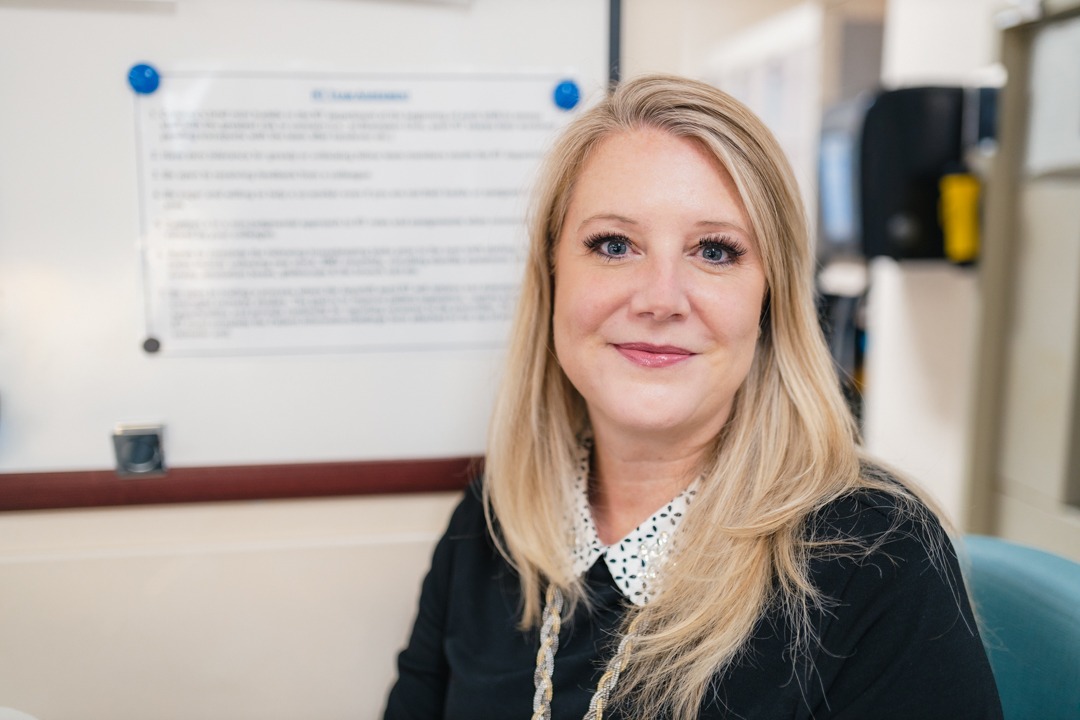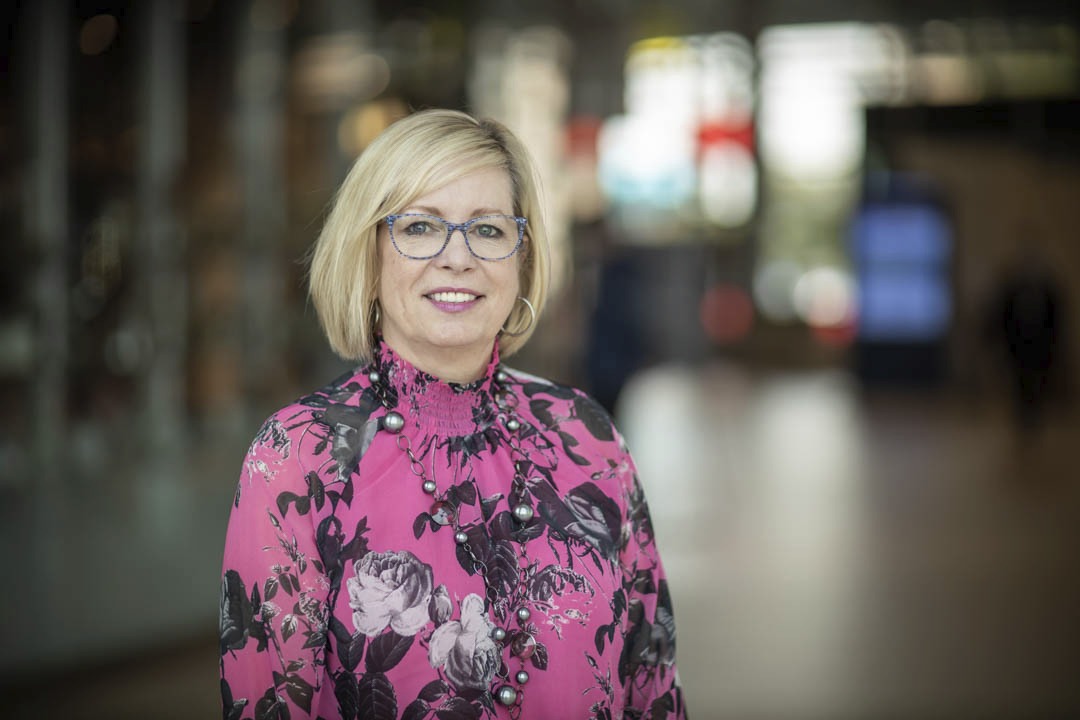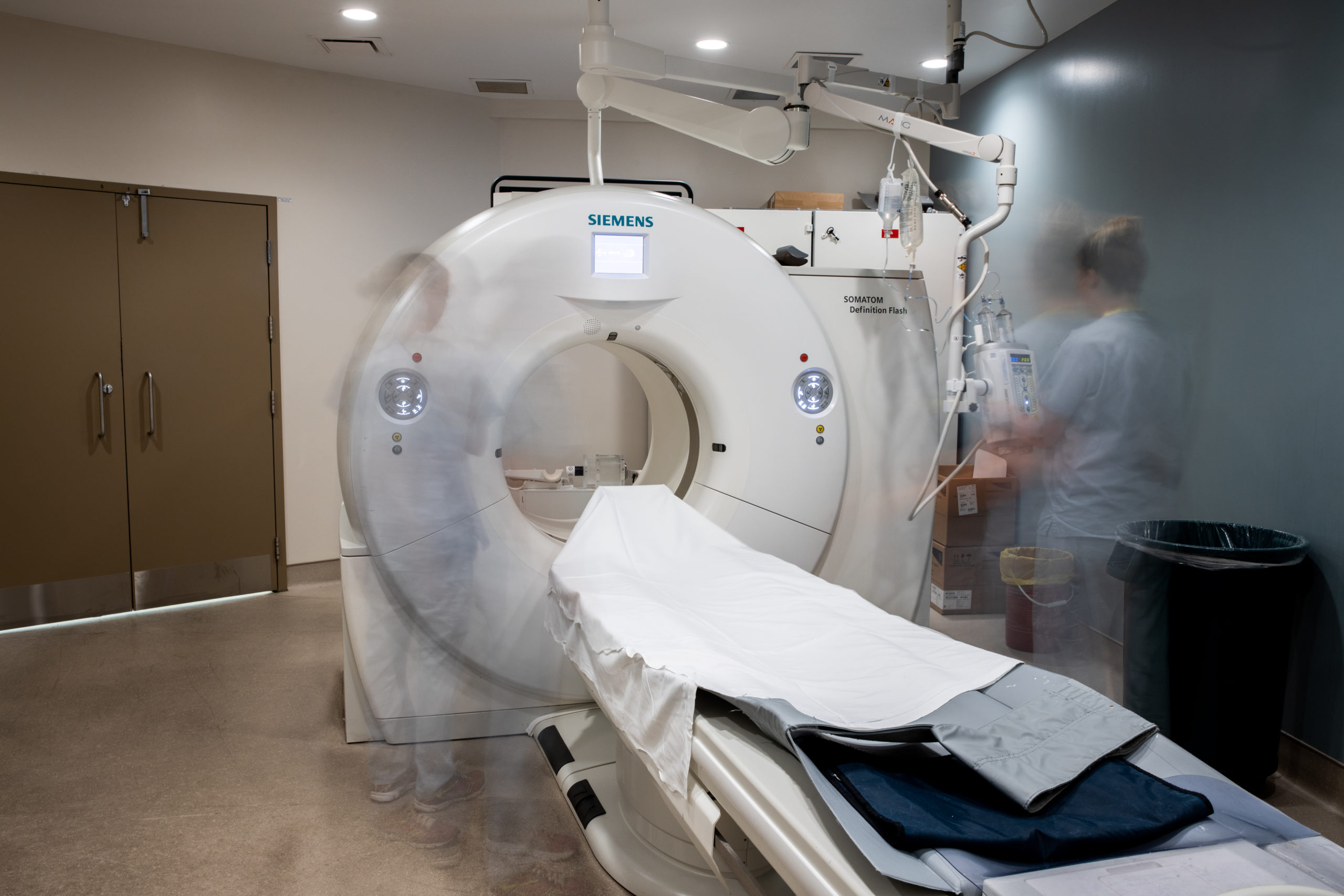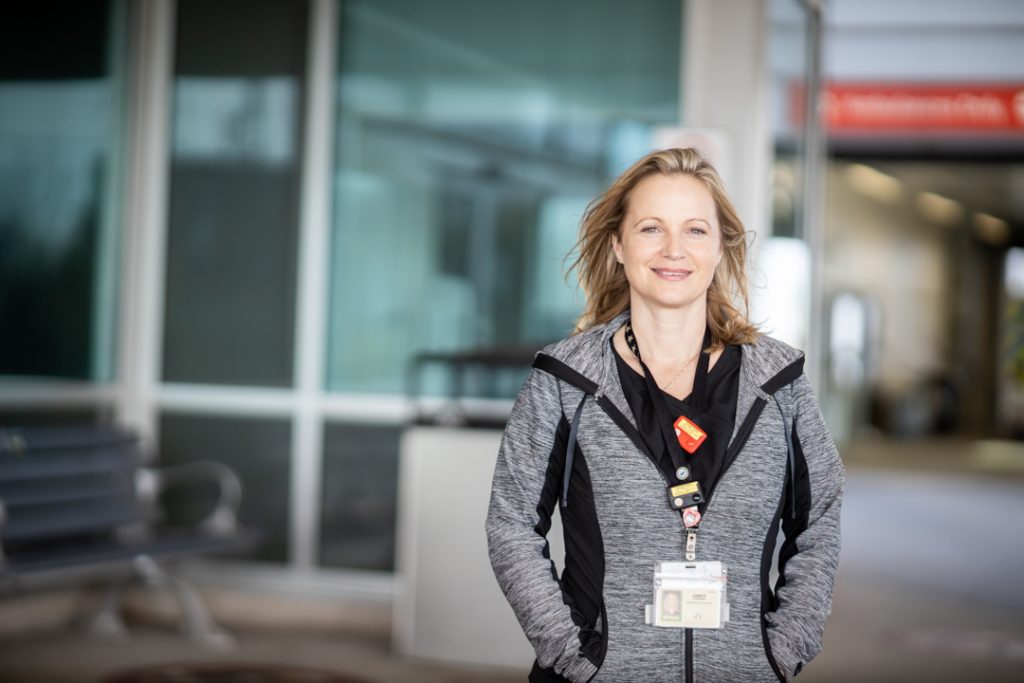
Introducing a Medical Imaging Technologist
Janet Corning has worked for Hamilton Health Sciences (HHS) for more than 20 years. Her career with HHS stretches back to her final year of university when she completed her student placement at the former Henderson Hospital (now Juravinski Hospital and Cancer Centre) prior to being hired as a technologist.
Having spent her entire working life at HHS, Corning has built close friendships with her colleagues. Her positive experience during her final student year is why she chose to remain at HHS, despite being offered jobs at other hospitals.
In recognition of Medical Radiation Technologist Week (November 8 – 14), we asked Corning about her chosen career, what a medical imaging technologist does, and how COVID-19 has affected the X-ray team.
Who are some of the patients you care for?
In the general X-ray area, we work with a number of patients across various departments: inpatients and outpatients, patients from the Juravinski Cancer Centre, the emergency department, and fracture clinics. We also go to the wards for portable imaging such as the emergency department, and different units such as intensive care unit (ICU), cardiac and vascular intensive care unit, and the post-anesthesia care unit.
Our largest patient group comes from the fracture clinic, so they’re in and out quite often throughout the day. With regard to emergency department patients, we try to complete their exams as quickly as possible in order to keep things running smoothly. For cancer patients, we time their exams so they don’t interfere with their cancer treatments and other related appointments. Outpatients can come to the department at any time to have their ordered exam completed.
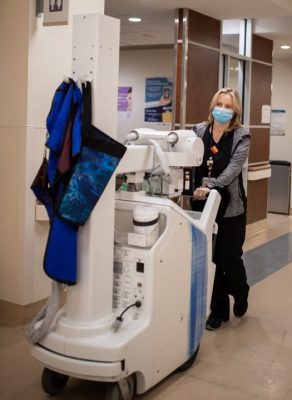 Missed appointments in Diagnostic Imaging have become a regular occurrence due to the COVID-19 pandemic. How has this affected your work?
Missed appointments in Diagnostic Imaging have become a regular occurrence due to the COVID-19 pandemic. How has this affected your work?
The number of outpatients at the start of the pandemic had really reduced from what we normally would see. And because elective surgeries were cancelled at the outset, fracture clinics were closed so we didn’t have any pre-op patients to care for. Also, understandably, there was a fear of contracting COVID so patients were also not showing for appointments. But we’re starting to see an increase in appointments, so it looks like things are returning to normal. However, we need more time to prep patients, putting on and doffing our personal protective equipment, and extensively cleaning the X-ray room.
What are some of the challenges that come with your position? The rewards?
I’d say the most challenging part is seeing patients who know there isn’t much more we can do, and their families coming in to say their last goodbyes.
But the best reward that comes from my position is getting to see patients as their health improves and they get to leave the hospital. It’s always uplifting to see a patient who is returning for a follow up and they are healthy, happy, and back to living the life they had before becoming ill.
Is there a misconception or general misunderstanding about your field that you’d like the community to know about?
Some people feel X-rays are an outdated form of technology when, in fact, they’re still the most widely used source of diagnostic imaging. They provide quick results and allow doctors to follow up with other diagnostic tests if necessary. Another widely held misunderstanding is that X-rays are dangerous. The amount of radiation used for X-rays is minimal, especially with the advancement of digital radiography – which is an even lower dosage. In addition, the use of lead shielding when possible also helps to reduce exposure.
What do you enjoy most about working at HHS?
I have a great group of co-workers who make coming to work a fun experience. Diagnostic Imaging is a big family and we’ve shared many joys and sorrows over the years. Many of the technologists were students here and joined our team after they graduated because they developed lasting friendships with many of the staff. The staff members who were working here when I started are beginning to leave and follow their retirement dreams, while the students I helped mentor are moving into full-time jobs, and starting careers and families of their own. I could not ask for a better group of people to work with.

